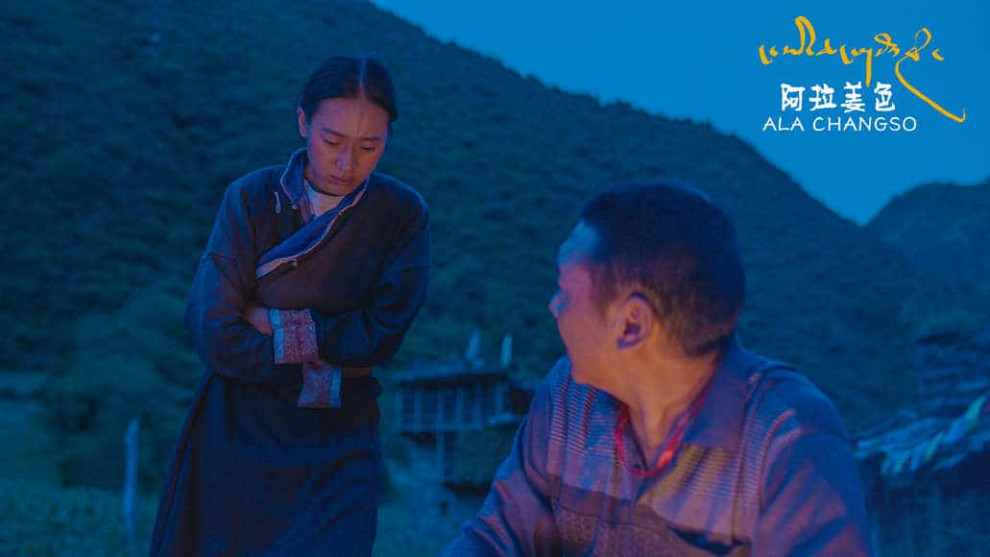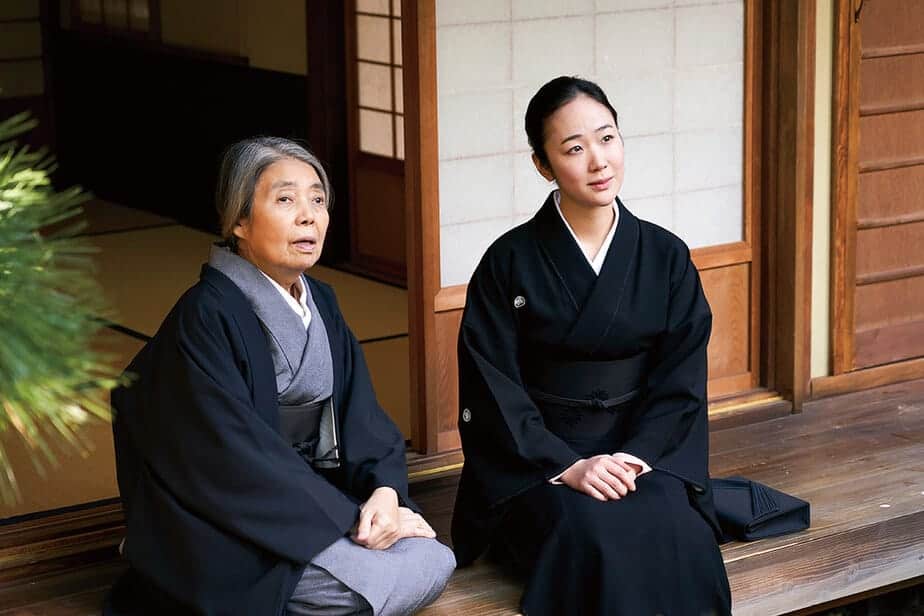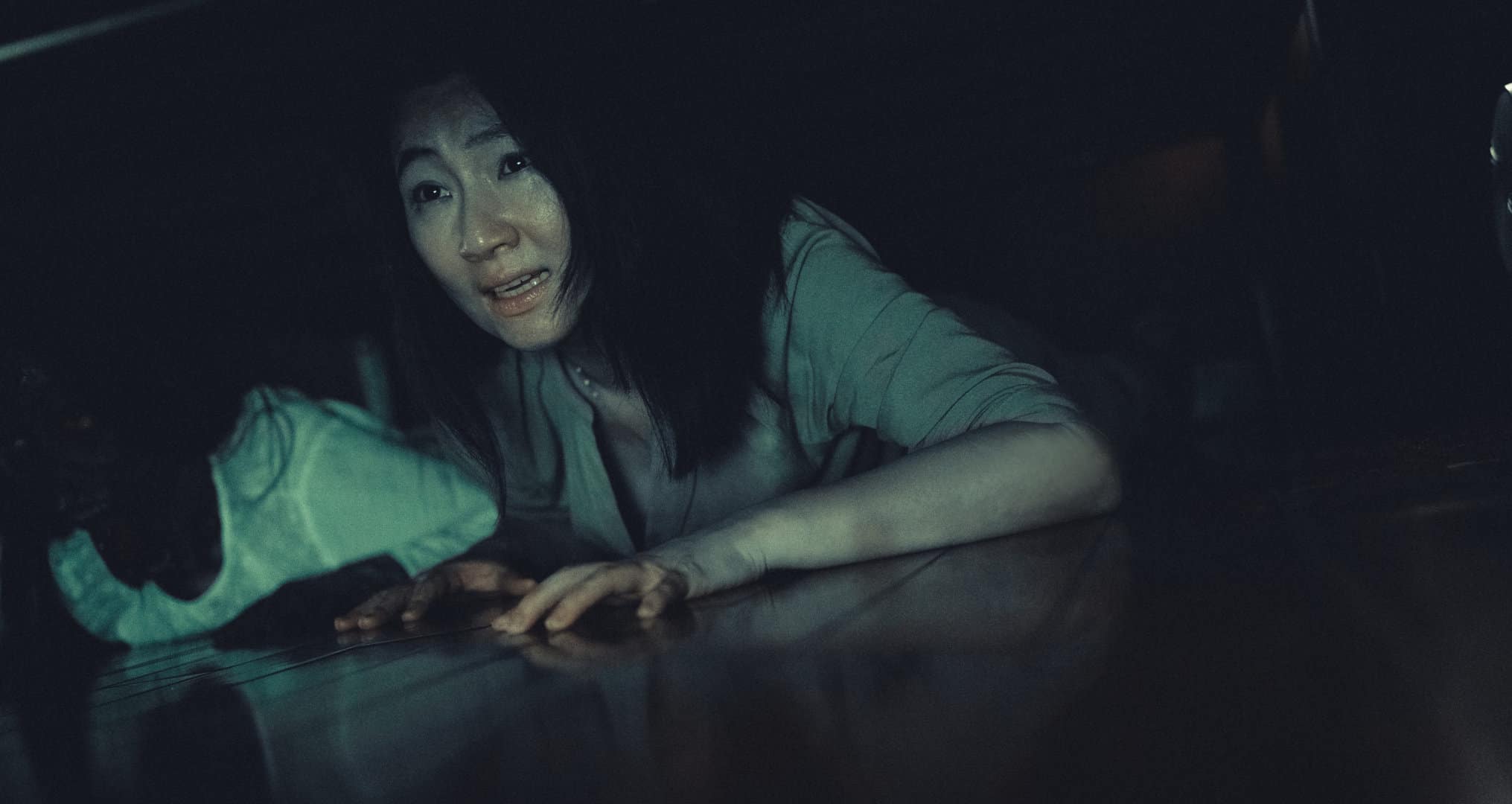“Ala Changso” is another film (along with the ones by Pema Tseden) that follows the main rule of the Tibetan New Wave, to present the reality of Tibet with as much realism as possible. However, it is also a unique one, since it is performed in a rather rare dialect, only spoken by a few tens of thousands people, two of which are the protagonists of the movie, Yungdrung Gyal and Nyima Sungsung, who actually come from the area it is spoken (big thanks to Françoise Robin for all the info)
“Ala Changso” is screening at
Festival des Cinémas d'Asie de Vesoul

Drolma, whose first husband has died some time ago, learns that she suffers from a life-threatening disease and immediately begins to connect her illness with her failure to make a pilgrimage to Lhassa that she has promised the deceased. Without explaining anything to the perplexed and angry current husband Dorje, she begins a trip of nearly 1000 km by foot, that even includes a ritual that has her leaning to the ground in a kind of prayer almost with every step. Considering this particularly hard and slow way of moving, her illness and the fact that the two girls who were supposed to accompany her abandon the effort quite soon, her “mission” seems doomed. Eventually, Dorje, who could not accompany her because that would mean abandoning his elderly father, manages to come with her and soon joins her along with her son from the first wedding, Norbu, who has been growing up with his grandparents. Tragedy, however, is inevitable and soon the trip takes a completely different form, as also a donkey becomes a member of the “troupe”.
In a tactic that is also present in “The River”, Sonthar Gyal changes the protagonist and in essence, the general focus of the movie in about the middle of the narrative, splitting the film in two, although a number of elements remain the same in both parts. This approach allows the film to remain interesting for its whole duration, and Gyal to present more sociophilosophical comments and to “enhance” some that are also featured in the first part.

The first comment seems to be regret and the trauma it can lead to, with Gyal giving this part an essence that could be interpreted as something between the supernatural and the lack of logic, as presented by Drolma's actions. The pain secrets can cause, particularly among family members is another one, although in Drolma's case, her secrecy seem to be dictated by caring for them, and not some personality quirk.
The second part deals much with the fragile psychology of children, and their need for acceptance and guidance from their parents, and the concept of family and what can shape one. Most of all, however, it deals with loss and the way it can change people, but in this case, also the way it can join them. At the same time, love (even in its most belittling aspects as is jealousy) and dedication are two concepts that surround the story, as they are presented as values that can even surpass death.

The road movie basis of the narrative allows Gyal to explore all these comments while the story moves continuously forward, in an element that I felt adds much to the entertainment the film offers. However, and in contrast to the usual focus on the surroundings in works that take place in similar settings, Gyal instead aims his attention completely on his characters, giving his movie an anthropocentric perspective and avoiding completely the “tour guide” elements, maybe with the sole exception of a single long shot of Lhassa. DP Wang Weihua's approach helps significantly in this effort, with his framing being simple, realistic, without any exaltation, avoiding, however, the documentary aesthetics almost completely.
The acting follows the same rules, with Yungdrung Gyal as Dorje, Nyima Sungsung as Drolma and Sechok Gyal as Norbu presenting their parts with realism, in perfect resonance with the film's general style. The changes all actors present is the highlight of all performances while one can only applaud their effort regarding the difficulty of the repeated laying down/staying up sequences, that must have put a significant strain on them and particularly Sungsung, who has most of these scenes. Lastly, the presence of Jinpa who seems to emit a star quality even in this setting (similar to the one witnessed in the film “Jinpa”) is definitely a tick in the pros column.
“Ala Changso” is as important as it is unique and well shot, and a must-see for all fans of meaningful art-house















